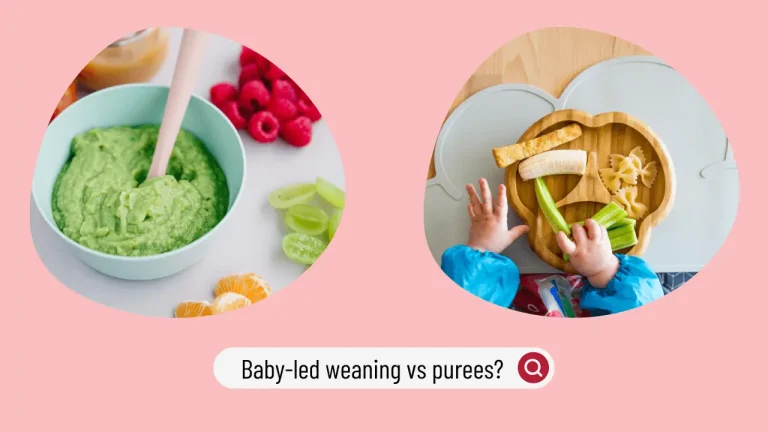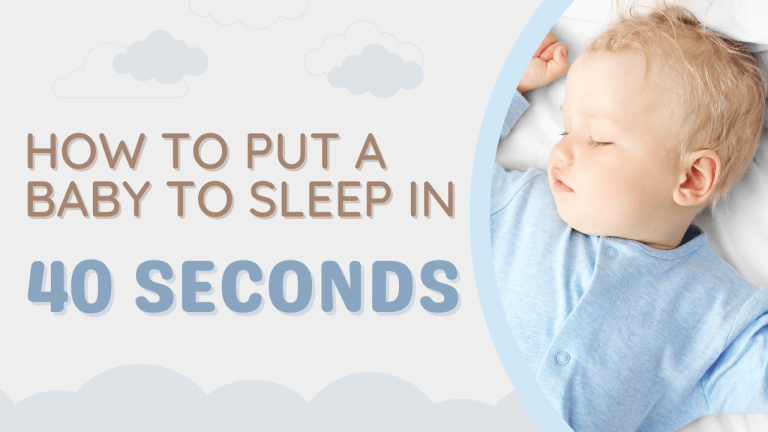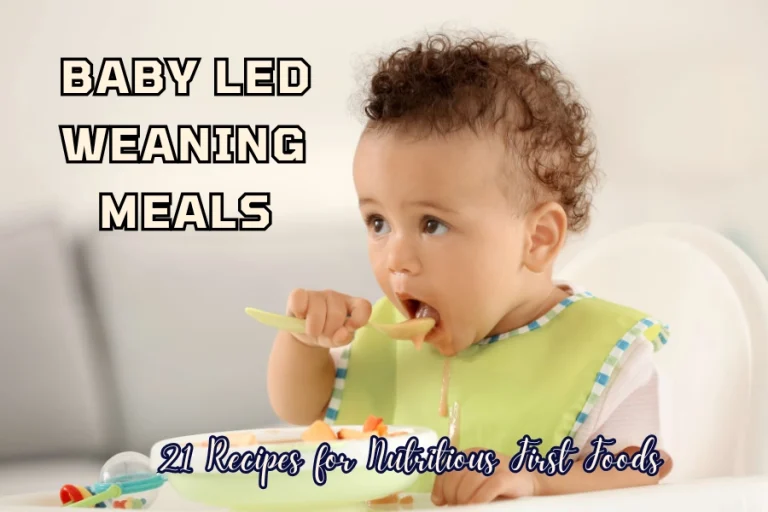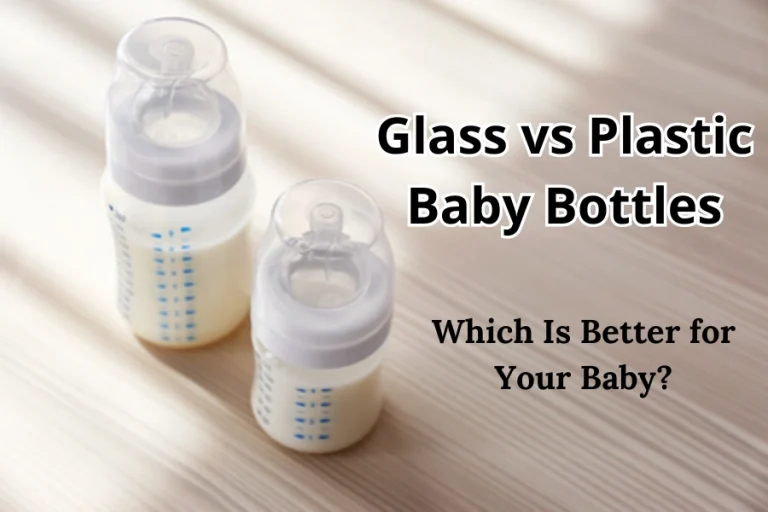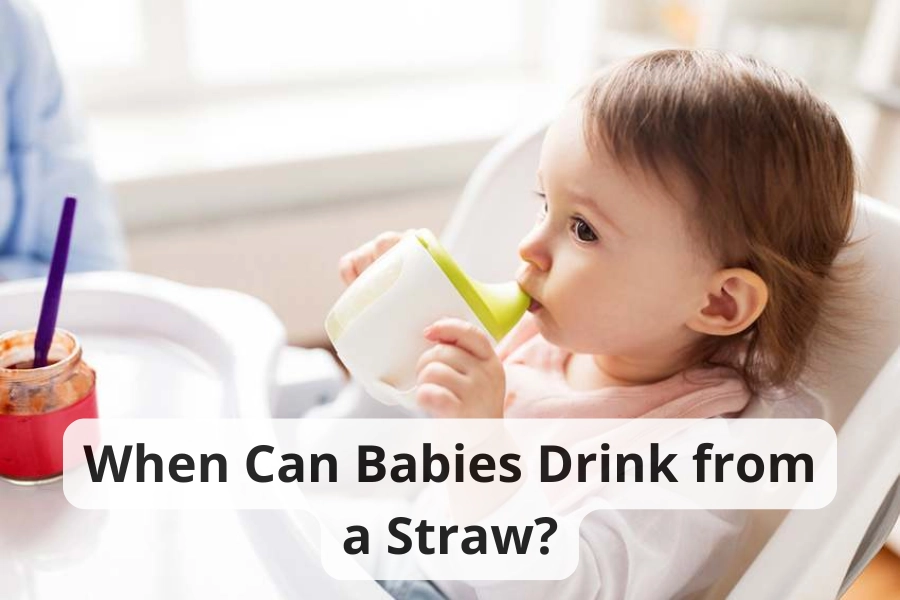
American Academy of Pediatrics often recommends introducing straws to babies early on because of the many benefits they offer. But when exactly is the right time?
“When can babies drink from a straw?” is a common question among parents. Transitioning from a bottle to a sippy cup with a straw is a major milestone in your baby’s development. So, today, BabiesParent is here to help you understand the signs that your baby is ready and what you need to know to make this transition smooth.
When Can Babies Drink from a Straw?
The rule is that babies should be ready to drink with a straw between 6 and 12 months, usually at the beginning of the 9th month. Transition to a straw usually starts when your baby has already stopped breastfeeding and begins with solid food. However, babies are not all the same, for each child develops at his or her own pace.
Below is a timeline of when can babies drink from a straw commonly seen in most young children and notes to prepare for this transition.
Timeline
Each child will have different milestones. However, in general, most children will begin to make changes according to the following milestones.
- 4 – 6 months: This is the first “budding” time when babies switch from baby bottles to cups. At this age, babies can drink from an open cup held by an adult.
- 9 – 12 months: After getting used to drinking from an open cup held by a parent, babies around 12 months old can start drinking from an open cup with a small amount of water.
- 9 – 15 months: This is the “ideal” time for you to teach your baby to use a straw. Toddlers at this age can drink from a straw independently.
These milestones are based on data we collected and observed from many children. Typically, children start eating solid foods and stop using baby bottles around 6 months old. At that time, parents can let their children drink from an open cup.
At around 9 months old, children will start to want to hold the cup to drink water by themselves. But at that time, their hands were still weak, so it was easy to spill. Therefore, 9 months old is a great time for you to teach your child to use a straw.

Texture
One tip for toddlers to practice using a straw is to start with thick liquids, like pureed food. Once your toddler has mastered using a straw to suck thick liquids, you can gradually move on to thinner liquids, like thinner purees, breast milk or formula.
Finally, once your toddler has mastered drinking from a straw, introduce water. Thin liquids like water are the hardest texture for toddlers to swallow when practicing using a straw because they are not yet familiar with the control of their mouth and tongue.
Type of cup and straw
To give you a better understanding of when babies can drink from a straw, let’s look deeper at the kinds of cups and straws in use during this transition. The big question here would be: spout sippy cup or straw cup?
A lot of parents fear that sippy cups are a poor option, but they can actually be one of the best tools to help your baby make this switch. Sippy cups can even facilitate an easy transition from a bottle. Moreover, they get your baby used to finally drinking from a regular cup later on.
Why are spout sippy cups so great? Well, for babies and toddlers, the soft straws go easy on your baby’s gums, while the spill-proof lids reduce messes. Besides, drinking from a sippy cup may help your little one feel more grown-up and independent.
So, which is the best cup should you choose? That is totally up to you! Just make sure the straw is soft so that it will not hurt your baby’s gums.
How to Teach Babies to Drink from a Straw?
Besides the question of “when can babies drink from a straw,” parents are also keen to learn how to teach their children to use straws. Here are some simple methods to make this transition more enjoyable for both you and your child.
Pipette method
This is a simple initial method to help babies learn how to close their lips and understand how to use a straw.
Step 1: Prepare a straw (it does not matter what type of straw it is) and use your hand to hold a small amount of liquid at the bottom.
Step 2: Hold the straw and offer it to your baby.
Step 3: Once your baby starts sucking the straw, take your hand off, allowing liquid to come into your baby’s mouth through the straw. This will help your baby learn how to shut his lips and how liquid flows from a straw.
Repeat this process several times, then place the straw back into the cup. Your baby will then want to continue sucking from the straw. A little secret that makes it even more interesting for your baby is to use his favorite drink. If your baby does not want to suck but pushes the cup away or only wants to play with the straw, then just put it away and try again some other time.
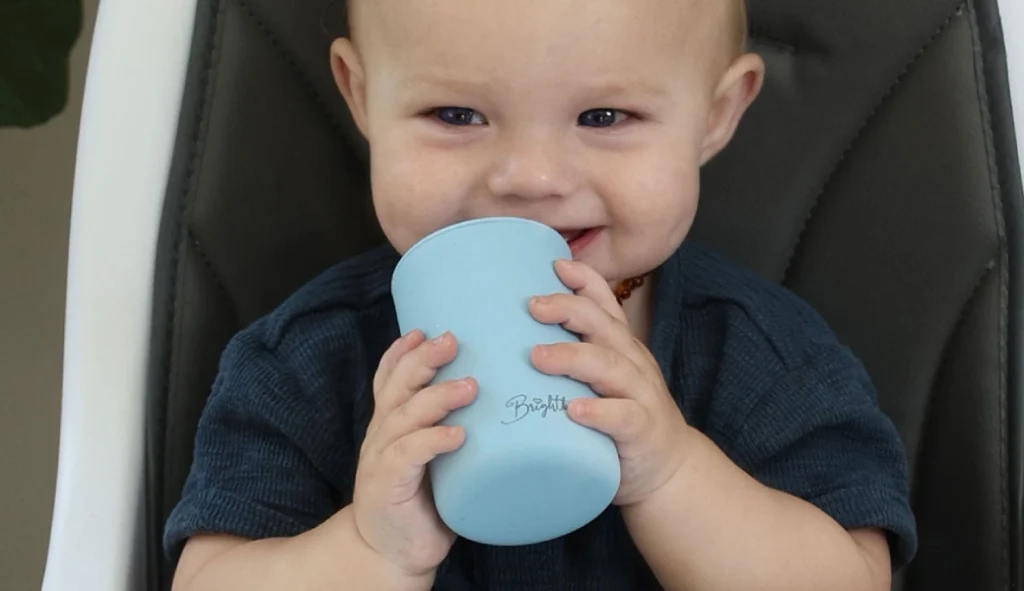
Straw trainer method
For this second method, you will need a more “special” cup. There are cups on the market that when you squeeze the bottle the liquid will be pushed up the straw. That is the cup you need for this method. My favorite is the Honey Bear therapy cup. It has a cute bear shape that all children love and a soft straw.
Step 1: Take the Honey Bear cup to the table and fill it with your baby’s favorite drink-be it breast milk or formula. Hold the straw in front of your baby’s mouth and await him sucking on it.
Step 2: Once your baby has sucked on the straw, you should gently squeeze the cup. This way, the cup will automatically squirt small amounts of water onto the straw and into your baby’s mouth. Most babies will automatically respond to this by closing their lips and swallowing the liquid.
Repeat this a few times and next time don’t squeeze the cup anymore so that your baby can suck on the straw. This method is usually applied to children who do not “hate” straws. You may have to do this a few times until your baby can suck without squeezing the bottle. Then, once your baby has mastered it, you can switch to a regular straw cup.
Tips for Teaching Babies to Drink from a Straw
To help you better prepare for when can babies drink from a straw, we will share some tips to make this transition “gentler”.
- Patience is key: Not all babies will “like” and “accept” to use a straw right from the start. Some babies will take longer to learn to use a straw. So be patient and wait for your baby to accept using a straw.
- You can let your baby be a little hungry: To increase the effectiveness of practicing using a straw, you can let your baby be “a little hungry”. If it is a young child, separate the straw practice session and the milk-drinking session by about 60 minutes. If it is an older child, space the time out by about 2-3 hours.
- Use a smaller straw: If your baby knows how to suck but cannot close his mouth and causes the liquid to spill out, you can switch to a smaller straw. And don’t forget to encourage your baby to hold the straw tightly.
- Use thicker liquids like pureed food or smoothies: For babies from 12 months old, you can practice giving them thicker drinks. Thicker drinks will have a slower flow rate, allowing the brain to have more time to close the lips and swallow better.
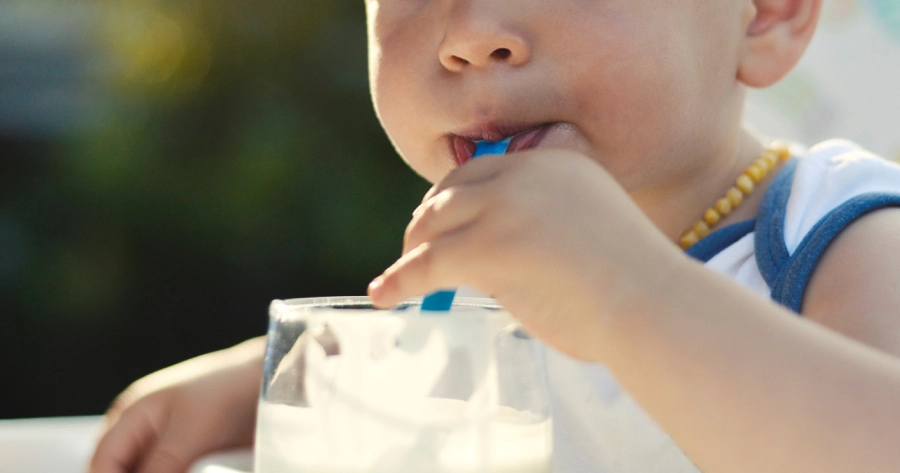
FAQs
A child can start with a cup around 6 months and should be off the bottle by the 12th to 18th month. By this age, the child will have progressed to sitting up or will be able to feed themself with a spoon.
Yes. Because using a straw will help children practice better oral motor skills. Drinking with a straw helps children practice their mouth and tongue muscles, preparing them for speaking and eating harder foods later.
You can start allowing your baby to learn to drink from a cup at the age of 6 months. You can also hold the cup to feed your baby at this age. As your baby gets bigger, you can teach your baby to hold the cup themselves and learn to drink from a straw. Or use a sippy cup, which will be easier to get them comfortable with.
Final Word from Babies Parent
We’ve got the answer to your question about when can babies drink from a straw. Switching from a bottle to a straw cup is a big step for your little one. By observing the signs that your baby is ready and following the tips above, you can help them get used to using a straw easily.
Teaching your baby to use a straw can help them develop motor skills and create lasting memories for the whole family. Turn this transition into a fun game to keep your baby engaged. Remember, every baby is different, so be patient and provide a happy environment for your baby to learn and grow.

